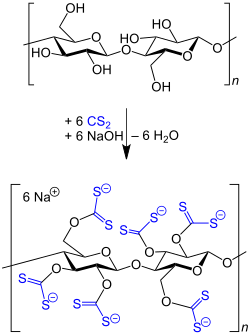Cellophane facts for kids
Cellophane is a special kind of clear wrapping material. It's made from something called cellulose, which comes from plants. Think of it like a thin, see-through sheet! Cellophane is great because it doesn't let much air, oils, or even water pass through it. This makes it super useful for keeping food fresh and safe in its packaging.
Contents
How Cellophane Was Invented
Cellophane was invented by a Swiss chemist named Jacques E. Brandenberger. He worked on his idea for ten years to make it perfect. He added a substance called glycerin to make the material softer.
By 1912, Brandenberger had built a machine to make this special film. He named his new product "Cellophane." This name comes from two words: cellulose (the plant material it's made from) and diaphane (which means "transparent" or "see-through"). He received a patent for Cellophane that same year.
Later, a company called DuPont built the first factory in the United States to make cellophane. One of their chemists found a way to make it even better by making it moisture-proof. After this improvement, cellophane became extremely popular!
Cellophane as a Trademark
In some countries, "Cellophane" is a general word that people use for any clear wrapping film. However, in other countries, "Cellophane" is a registered trademark. This means it's a special name owned by a specific company.
Why Cellophane Is Useful
Cellophane played a very important part in how stores started selling fresh meat. Before cellophane, it was harder for customers to see the quality of the meat they were buying. Because cellophane is so clear, shoppers could easily see the meat before they bought it. Cellophane also helps to stop food from changing color and going bad quickly.
Images for kids
See also
 In Spanish: Celofán para niños
In Spanish: Celofán para niños



